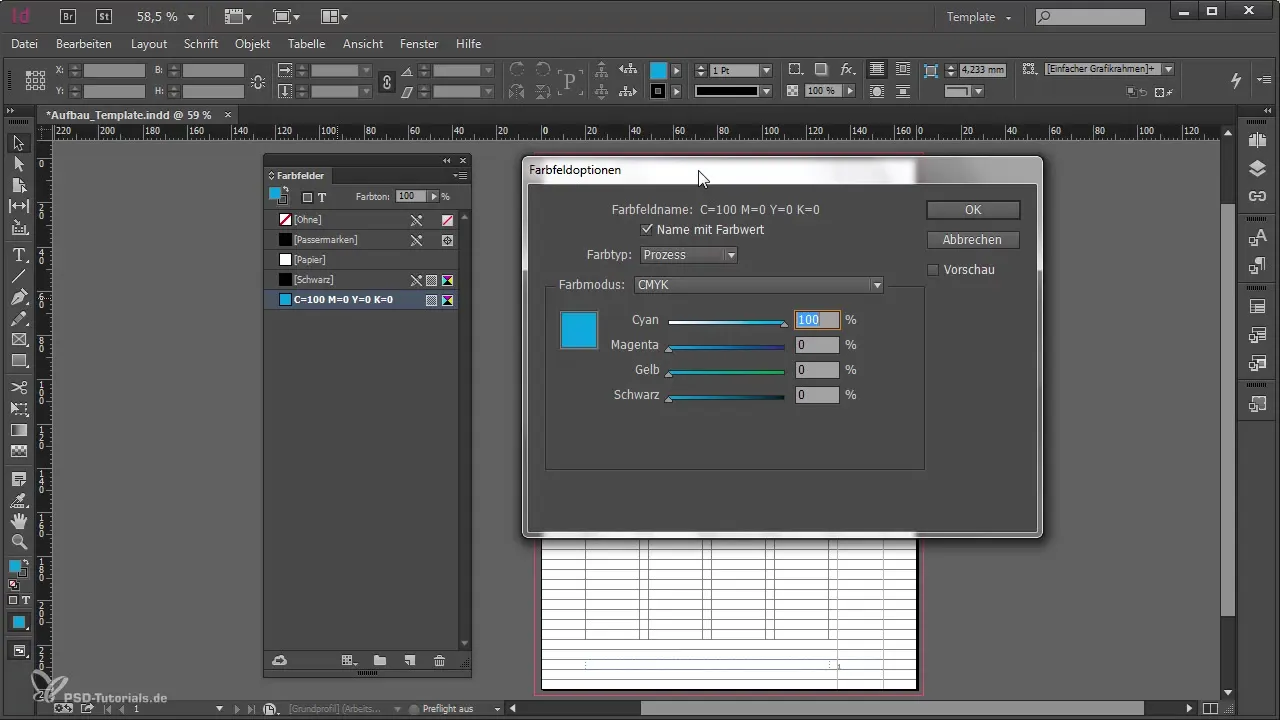You have created a new document in Adobe InDesign and now want to ensure that all used colors are clearly organized? In this guide, you will learn how to effectively create color swatches for your project and remove unnecessary colors from the panel. This not only optimizes the workflow but also avoids potential issues with redundant colors.
Key Insights Carefully creating and managing color swatches in Adobe InDesign is crucial for the clarity and consistency of your designs. By removing unused colors and creating new color swatches, you can ensure that every element in the layout looks optimal and avoid color issues during typesetting.
Create and Organize Color Swatches
Start your project with clear color management. InDesign comes with a default set of colors that you may not need for your document. Begin by removing these colors to create a tidy working environment.

Select the standard colors in the panel that are automatically added when creating a new document. These colors are often unnecessary and can be deleted to make room for your own color swatches.
To create a new color swatch, go to the “Swatches” menu and click on the command “New Swatch.” A window will open where you can enter the desired color values.
It is important to ensure that the colors for each chapter in your project are different. A well-thought-out color scheme ensures that each chapter appears in its specific colors during typesetting.

Depending on the number of chapters, you will need to create various color swatches. Name them accordingly to maintain clarity. For example, “Chapter 1”, “Chapter 2”, etc. This allows you to manage colors efficiently and avoid mistakes.
Alternatively, you can create a color palette for all chapters and then adjust these colors in each document. This saves time when assigning them to paragraph styles.
When switching from one chapter to the next and wanting to adjust the colors, ensure that each color assignment is consistent. The naming of the color swatches should be precise and meaningful to avoid future confusion.
Make sure to set the desired color modes. In professional print applications, CMYK color values are crucial. For example, for a light green, you might set 50% Cyan, 10% Magenta, and 100% Yellow.
Once your color swatches are created, it can be helpful to add variations such as different shades. Use the menu in the panel to add a new shade. This significantly speeds up your workflow.

With this groundwork, you can make adjustments at any time. If a color intensity needs to be changed, you can do this directly in the color swatch without having to adjust every element in the layout individually.
It is absolutely important to maintain order in your color swatches. Unnecessary colors imported from other programs can cause problems. Be sure to clean up colors that are not in use to avoid future complications.
Summary – Creating and Managing Colors in Adobe InDesign
Creating color swatches in Adobe InDesign is an essential skill for any designer. By removing unused colors and systematically creating color swatches, you can ensure that your layout remains appealing and professional. Keep your workspace clean to allow creative processes to flow effectively.
Frequently Asked Questions
How do I delete standard colors in InDesign?To delete standard colors, open the Swatches panel, select the colors, and click on the trash can icon.
Can I easily adjust colors later?Yes, you can change the color values in the swatch at any time, and all inserted elements will be automatically updated.
What is the difference between RGB and CMYK in InDesign?RGB is intended for digital displays, while CMYK is optimized for printing and ensures color fidelity.
What should I do if I see "duplicate" colors in the swatch?Regularly clean your swatches to ensure no unnecessary colors are present.
How should I best name my color swatches?Use clear and precise names, such as "Chapter 1 Color", to avoid confusion. Keep the names self-explanatory.


